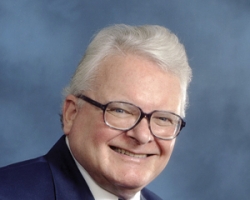The City Council voted 4-1 to approve the installation of three charging stations for electric cars in Seal Beach on Monday, Jan. 10. District 3 Councilman Gordon Shanks cast the dissenting vote. Shanks was concerned that electric cars are not yet popular enough to justify the project. He said he felt that the city was getting “ahead of the curve.”
Sean Crumby, director of Public Works, said staff was asking for $15,000 for the installation project.
In his written report to the council, Crumby pointed out that Seal Beach installed charging stations in 1998. There were three, two of them within the Eighth Street beach parking lot. “Those stations were used initially, but the use trailed off,” he wrote.
“Electronic vehicles were not successful at that time as the auto manufacturers all had proprietary charging systems that were not compatible,” Crumby wrote. The beach lot charging stations were removed in 2005.
Late last year, District 5 Councilman Michael Levitt proposed that Seal Beach establish new charging stations.
According to the staff report, two of the proposed charging stations would be at the original beach parking lot stations.
The report said the cost of installation would be lower because the infrastructure for the charging stations is already in place. The third charging station will be at the parking lot at 210 Main St.
Seal Beach resident and community activist Robert Goldberg asked the council to consider Level 3 charging stations that are faster than the Level 1 and Level 2 chargers that would be available in Seal Beach. According to the Crumby report, Level 1 charging is at 110 volts and takes a day or two.
Level 2 charging is at 220 volts and takes four to eight hours to charge an electrical car.
Crumby told the council that Level 3 charging stations require a technician to be available at all times. His staff report said Level 3 charging is not available to the city at this time.
District 4 Councilman Gary Miller asked if staff had looked at the economics of the proposal.
Crumby said staff was looking at cost recovery, but the staff didn’t have that information yet.
Crumby went on to say that state law prohibits the resale of electricity.
District 1 Councilman Charles Antos asked if Southern California Edison was satisfied with the staff’s proposal. Crumby said yes.
Shanks asked if the staff knew how the salt in the Seal Beach air would effect the charging station equipment.
Crumby said no.
Shanks was not convinced charging stations were necessary. “I think we need to hold off on this and see how many electric cars there are out there,” he said.
“I really can’t support this,” he said.
Levitt asked how the electrical cord would be secured.
Crumby said someone could cut and steal the cord.
Shanks joked that on St. Patrick’s Day, someone could just drive off without remembering to unplug the cord.
Levitt said you weren’t supposed to drive on St. Patrick’s Day.
Antos said the charging stations would go with the California Coastal Commission’s “green” policy.
“Funds have not been budgeted for this action,” Crumby wrote in his staff report. “Staff recommends the shortfall to be funded through the designated $2.0 million General Fund Balance for Building and Facilities.”
As part of a budget amendment the council approved that same night the $ 2 million was transferred from the General Fund to the Capital Improvement Contract Professional Services Account.





